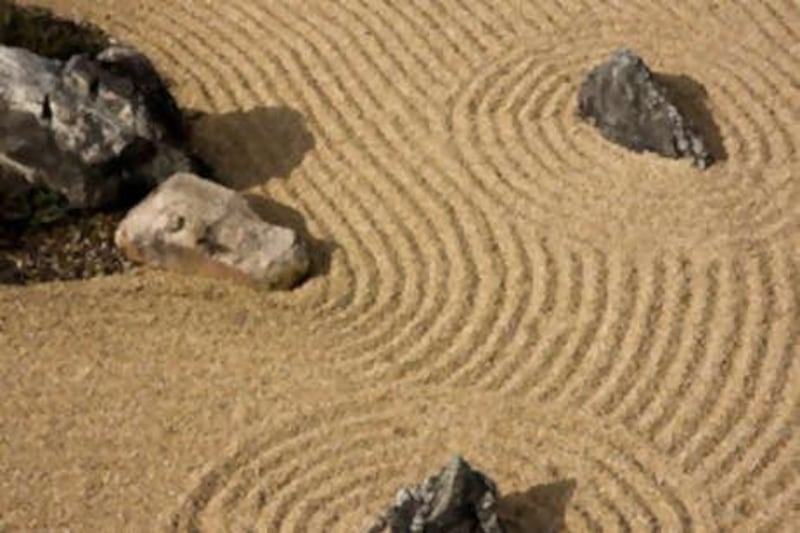Making a beautiful Japanese-style garden can be just as peaceful and fulfilling as having one. And the best news? It's a retreat that can be placed serenely in nearly any space, ranging from large, sweeping decks to tiny terraces. A karesansui, Japanese for "dry garden", is an entirely artificial environment - and perfect for repose and meditation. It's ideal for urban, dry environments - unlike a regular garden with living plants and their required tending, the karesansui is a model of minimalism and low maintenance, usually containing only sand or gravel, and rocks, imaginatively placed. Even those that include one or two shrubs are models of low-water gardening - and thus eminently suitable for this country.
There are no rigid rules for creating a Japanese zen garden. Stick to a core of three main themes - space, flow, simplicity. The objective is to make something spirit-soothing and serene. The surroundings and context don't matter - there's no such thing as incongruity with zen because its appeal is self-contained. Anouska Hempel designed a zen garden square in the middle of Bayswater, London for The Hempel hotel; it's beautiful, looks entirely appropriate, and is far from Japan.
Traditionally found in temple and palace gardens, these minimalist arrangements of gravel, sand and stones were used as the focus of meditation. Their origin lies in Buddhism, which regards nature as inspirational. Fittingly for gardens in the bone-dry UAE, the karesansui base (of sand or fine gravel) is intended to represent water and, when you rake it, you are trying to create waves. The rocks that are used in the garden represent mountains - a stable environment. The trick is to be sure that the sand is at least five centimetres deep or the swirls won't look good after raking; try Dubai Garden Centre for fine-gauge gravel or sand.
Find the stones that you wish to arrange - look at Dubai Garden Centre or Ikea for ready-bagged pebbles - and determine which side of the stone should face upright. Buddhists believe that stones have a "happy face", so consider them from all angles, find the smile then place the stones in their resting position. Traditionally, zen compositions have five groups of three stones, arranged asymmetrically. But experiment, and do what works with the dimensions of your garden.
How far you extend the symbolism of the traditional garden is up to you. Rocks, for example, may represent the sky or the earth, depending on whether they are vertically or horizontally shaped. Create an edge around the whole composition with brick, natural stone or pale, grey-toned wood. Consider using stones with interesting colours, shapes or textures, or other items of similar size, such as shells. Zen gardens generally include natural items made of wood, rock and vegetation, but don't be afraid to include statues or other additions. Consider a stone bridge, a basin of water, a lantern or even a small waterfall.
Just don't clutter your zen garden. The goal - and the beauty of it - is simplicity. If you want to make your Japanese garden more dramatic, add strategically placed lighting rather than more objects. Desert River in Dubai has pots that light up from within, and would give any zen garden a fun, surreal edge: place them in a corner for best effect. Desert River's frosted-glass Aurora cordless table lamps can be taken outside without the need for mains electricity (they last for 15-30 hours and can be recharged).
And if you don't have a large enough garden or balcony for a full-size karesansui, why not consider a table-top garden or tray - same serenity, different scale.










